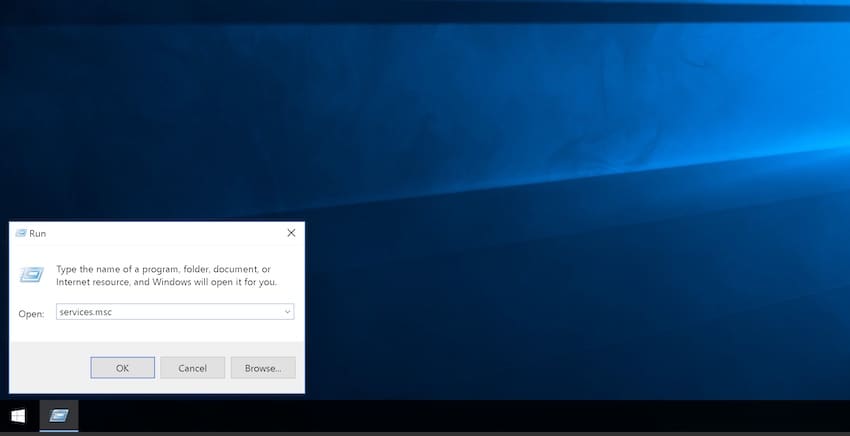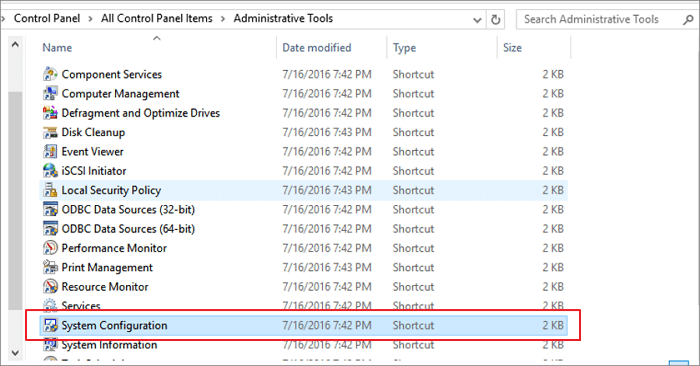Do you think it is necessary to keep the virtual memory automatically managed by the computer system or manually set by yourself on your PC? If you think it is needless to keep it because the physical memory (RAM) of your PC is enough for you to use, you can clear it on the computer. For your review, this text will introduce how to clear virtual memory in Windows 8 computer with legible pictures.
Video guide on how to clear virtual memory on Windows 8:
Steps to clear virtual memory in Windows 8 laptop or desktop:
Close some programs that are currently running to partially clear computer RAM memory. Right-click on any program in the task bar and select the 'Close' option. That will free up the memory used by the program. Even if you close every program running on the task bar, a big chunk of memory is taken up by the operating system. Method 3: Clear App Data File to Clear Memory Cache Step 1: At the first step, you have to click on the 'Start' button or hit on the 'Windows' key and click on 'Computers' to open My Computer. Step 2: My Computer window will appear; if you don't see My Computer, then manually type 'My Computer' in the start and hit the 'Enter' button. I have 6 GB of RAM installed on my laptop. It is just 4-5 months the RAM was installed and now I have around half of my RAM as a memory cache in my system. I have done many searches but unable to clear the cache of my memory. Waiting for your ANSWER.
Step 1: Open System Properties.
To open it, you can use the methods in How to Open System Properties on Windows 8 Computer.
Step 2: In Advanced menu, select Settings in Performance.
BTW, in the Performance, you are able to make changes to visual effects, processor scheduling, memory usage and virtual memory of the computer.
Step 3: As the Performance Options window pops up, choose Advanced and click Change button in Virtual memory.
Step 4: Select No paging file and tap Set in Virtual Memory window.
This step is a little different under two circumstances.
1. If the virtual memory is automatically managed by the system, you are required to uncheck the box before Automatically manage paging file size for all drives to cancel the default selection, and then choose No paging file and click Set, as the following screen shot shows.
2. Suppose the virtual memory is set manually, you can directly select No paging file and tap Set.

Step 5: In the following prompt box, choose Yes to disable the paging file and continue.
Step 6: Click OK when the paging file size is changed to None.
Step 7: Tap OK in the next window which asks you to restart your computer, and then go to restart your PC.
After restarting, as shown in the screen shot below, the paging file size becomes 0 MB. That is to say, the virtual memory is cleared successfully.
Later, you are also capable of setting virtual memory on your PC.
Related Articles:
Random access memory, or RAM, is the short-term or operating memory on your personal computer, and it is accountable for how the PC runs. As you continue to use your Windows PC, the available RAM (Random Access Memory) decreases. This happens as you install new programs, download applications, keep some unused files or create new files. Over time, your computer begins to slow down. Programs take longer time to launch and in the worst scenarios your computer runs into errors.
Such slow-running PCs are frustrating, and misused RAM is a key culprit why computers become sluggish. With a few simple troubleshooting steps and guidelines, you can free up RAM space and improve your computer's performance. Read below to know such steps:
Uninstall the installed Programs
:max_bytes(150000):strip_icc()/BIOS-setup-8fbd8c696b4f4558862fb72a615a2484.jpg)
The RAM decreases as you install new programs on your computer; the more you install the programs the slower it will become. For everything appears on your computer takes up a certain amount of system resources. Over time, your computer gets more and more slowly, the boot time extends, and all programs take longer to launch. Hence, to get rid of this, just uninstall all the programs that are not needed keep only the required programs.
For this just follow the below steps:
- Click Windows Start button -> Control Panel -> Locate the programs you are no longer use -> Double-click Add or Remove Programs-> follow the instructions to uninstall the programs.
- After this just remove the delete the setup files of those uninstalled programs For this go to Start -> Program Files -> locate the uninstalled programs just delete them and empty the recycle bin.


Uninstall invalid and corrupt registry entries
Installing new applications will create new registry entries, even after uninstalling the programs will not remove its registries; they might remain where they've been stored. Over time, your computer will turn into mess. So remember to cleanup registry entries when you uninstall a program.
Click Windows Start button -> Click Run ->Type- regedit -> press enter to launch the Registry Editor -> Locate the uninstalled application -> Right-click on it and select Delete
Clear Windows Cache (Internet files)
As you open new site or pages on your internet browser, the address and other login information will be saved in a temporary files and Browser history to facilitate easy access when you need it the next time. However, this would even lead to unnecessary cache memory and hence needs to be removed.
- In control Panel, locate the Internet Options icon Double-click on it. Under “Temporary Internet Files” click Delete files and then “OK” to confirm. Once all files have been deleted, exit Control Panel.
- Open the browser, click on the Settings option and select History and now just select “Clear Browsing History” this will remove all the history and even free up the cache
- Click the “Start” button -> enter .tmp in the search field. You will find a list of temp files, browse through them and delete all unnecessary .tmp files.
Clear Junk files, temporary desktop files, log files etc...
How To Clean Memory In Laptop
As and when you use your system, your RAM memory will filled with some unused old files and other junk files. Hence one has to get rid of such files. For this you can use the Windows default tool called “Disk Cleanup”. Follow the steps mentioned below:

How To Clean Memory In Laptop
- Go to Start -> Programs -> Accessories -> System Tools ->Disk Cleanup
- Under Disk Cleanup tab and you will find many categories check on the following: Temporary Internet Files, Recycle Bin, Temporary Remote Desktop Files, Offline Files, Temporary Files, Compress Old Files and Setup Log Files.
- Now click the “More Options” tab and under “System Restore” hit the “Cleanup” button. (It removes all the System Restore points except the most recent one)
- Click the Disk Cleanup and click OK
How To Clean Laptop Computer
This will delete all the unnecessary files on your Windows system and free up your RAM. Now your PC is free from unwanted programs and files, thus increases PC performance. Didn't you feel this as a lengthy procedure and requires extra care and time. Instead you can just make use of the Remo Privacy Cleaner software that will do this for you in just one single click. This tool can quickly uninstalls all the programs, removes internet cache and temporary files, erases the junk files, log files etc. Thus with one tool you can perform all the above steps in just a single click.
